Grow Eggplants in Pots: The Basics
Eggplants, or as some might call them, aubergines or brinjals, are the more mysterious members of the nightshade family. Unlike their notorious relatives, they’re not here to cause a fuss. They’re self-pollinating, which means they don’t need a partner in crime to produce fruit. Think of them as the independent singles of the plant world. These hardy plants can go it alone as perennials in areas where frost is a stranger, but they’ll need to be treated as annuals elsewhere.
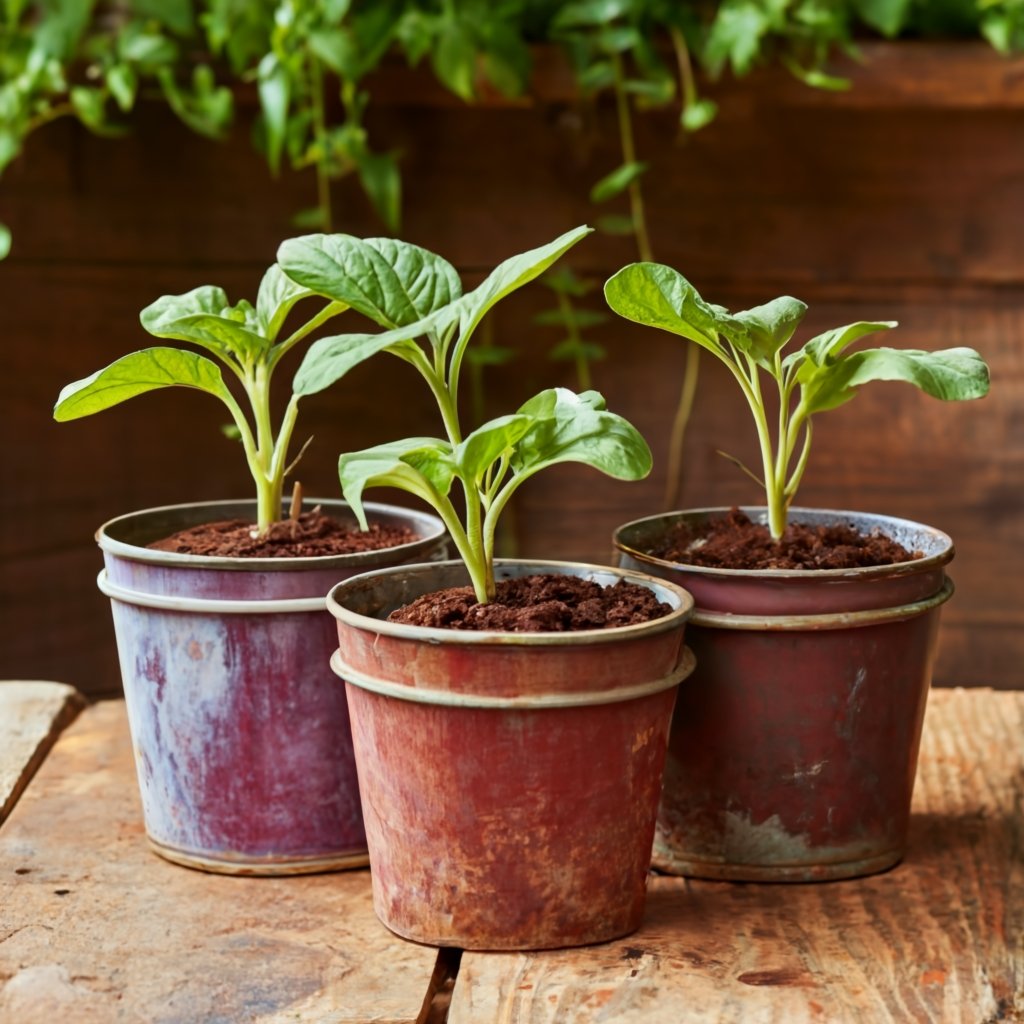
Why pots over garden beds? Simple: control and convenience. When you care for eggplant in a pot, you’ve got the reins on soil quality, watering, and sun exposure without ever breaking ground. Plus, pots are perfect for patios, balconies, or anywhere garden space is as scarce as a hen’s tooth. Ready to pot up and reap the glossy, delicious rewards? Let’s dig into the specifics of potted eggplant care.
Selecting the Right Eggplant Variety for Containers
Best Varieties for Pot Cultivation
Choosing the right type of eggplant for your container garden is key. Smaller cultivars are ideal because they’re more suited to the confined space of a pot. Varieties like ‘Fairy Tale’, ‘Finger Fruit Purple’, ‘Rosa Bianca’, and ‘Hansel’ not only manage the limited real estate well but also promise a harvest that’s big on taste. Here’s the lowdown on these compact varieties:
Fairy Tale Eggplant
- Size: Fruits are 3-4 inches long and 3/4 to 1 1/4 inches in diameter when mature.
- Flavor: Known for its wonderful flavor with no bitterness and very few seeds.
- Growth Patterns: Compact 18-24 inch plants that begin to bear fruit 49 to 60 days from transplanting.
Finger Fruit Purple Eggplant
- Size: Harvest when fruits are young and glossy, typically 4-6 inches long. Plants can grow 22-38 inches tall.
- Flavor: Dark purple skin with a silky texture and a mildly sweet flavor, requiring little cooking time.
- Growth Patterns: The growing season takes about 65-75 days from transplanting to maturity.
Rosa Bianca Eggplant
- Size: Generally larger in size compared to other varieties, suitable for containers at least 12 inches deep.
- Flavor: Offers a delicate sweet, mild flavor with a creamy consistency and no bitterness.
- Growth Patterns: Reaches maturity in about 78-83 days during the spring/summer growing season.
Hansel Eggplant
- Size: Fruits can be harvested at 3-4 inches long with a diameter of 3/4-1 inch. The plants themselves range from 24-36 inches in height.
- Flavor: Tender, dark-purple fruits ideal for grilling or adding fresh to dishes, with no bitterness.
- Growth Patterns: Produces abundant clusters of fruit in about 55 days from transplant.
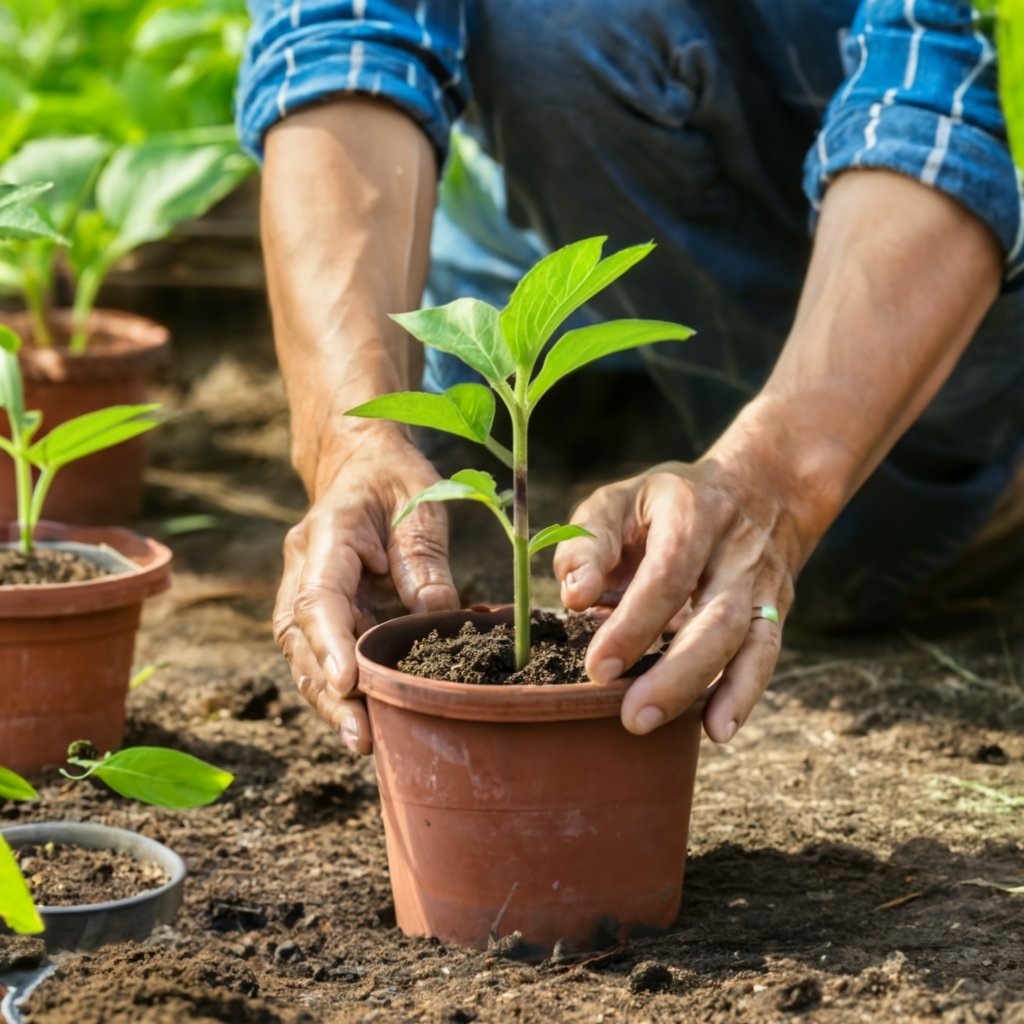
Here’s a quick comparison table to help you choose:
| Variety | Size (Height/Width) | Flavor | Growth Patterns | Days to Harvest |
|---|---|---|---|---|
| Fairy Tale | 18-24″ plants | No bitterness, few seeds | Compact, early producer | 49-60 days |
| Finger Fruit Purple | 22-38″ plants | Mildly sweet, silky texture | Moderate growth rate | 65-75 days |
| Rosa Bianca | 24-30″ plants | Sweet, creamy, no bitterness | Larger, needs more space | 78-83 days |
| Hansel | 24-36″ plants | Non-bitter, perfect for grilling | Fast, abundant producer | 55 days |
Now that you’re armed with this info, are you ready to make your container garden the talk of the town? Pick your variety and let’s grow some eggplants!
The Ideal Pot Size and Environment for Eggplant
Choosing the Right Container Size
A roomy 20-inch pot (50 cm) is non-negotiable for your eggplant’s comfort. Just like a growing puppy needs space to stretch out, your eggplant needs room to expand its roots. A pot this size ensures your plant has enough soil to support its growth and water needs, and it’s just the right real estate for one thriving eggplant. Drainage holes will help prevent water from pooling at the bottom of the pot, which can lead to root rot and suffocate your plants.
Providing Optimal Growing Conditions
Eggplants are sun worshippers, requiring at least 6 hours of direct sunlight daily. They’re heat lovers too, so keep the frost at bay and make sure they’re basking in warm weather. If you’re shivering in the cold, your eggplant is likely dreaming of sunnier days too. Get these conditions right, and you’ll be on your way to a bountiful harvest.
Grow Eggplant in a Container Garden
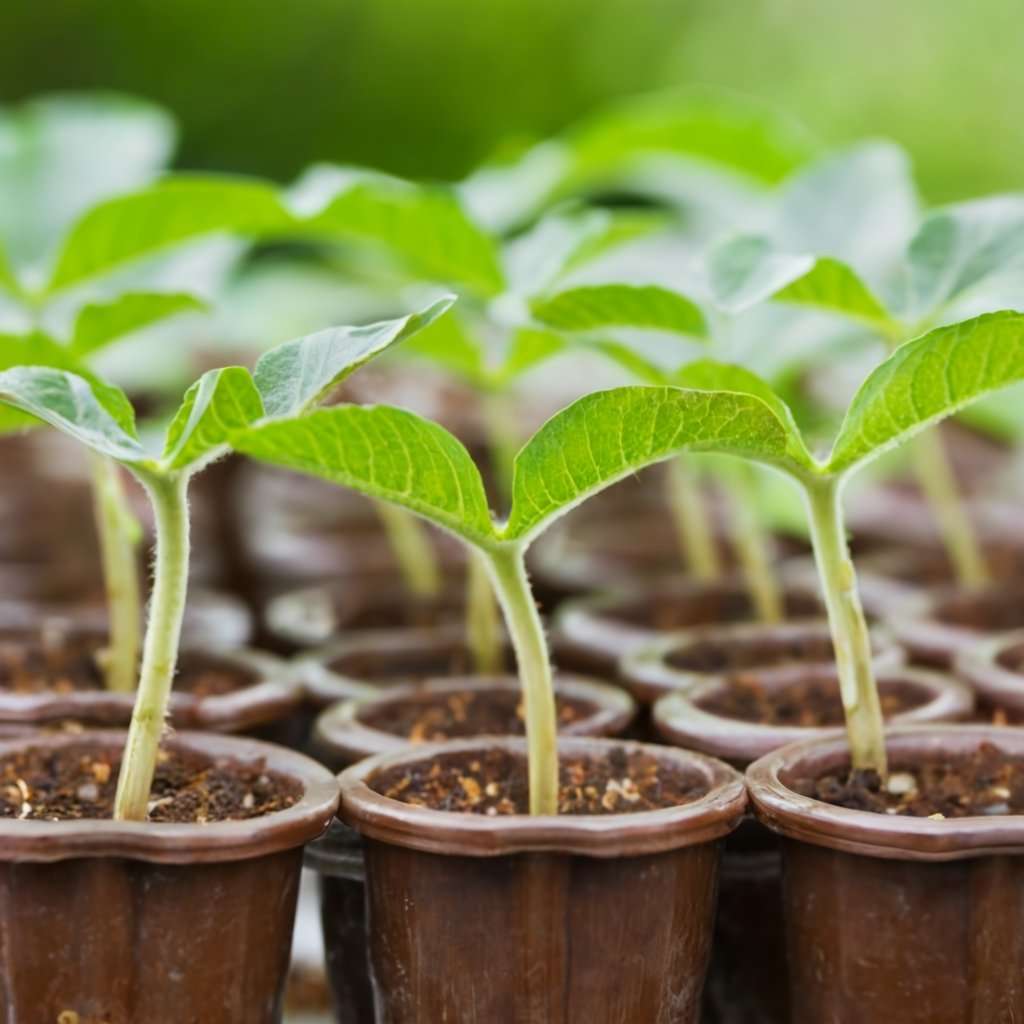
Seeds vs. Seedlings
Deciding between seeds or seedlings? Seeds are more cost-effective and offer a wider variety of options, but they demand patience and consistent warmth to germinate—think 10 to 21 days of babying. Seedlings, though pricier, give you a head start. They’re like the fast-forward button on your remote, getting you to the action (aka fruit) quicker.
- Fill the pot with suitable potting mix.
- Plant eggplant seeds about 5mm deep.
- Water regularly. Keep the soil moist, not drenched.
- Keep the pot in a warm spot—eggplant seeds love a bit of a sauna. Full sun is ideal if possible, but at least 6 hours a day.
- Patience is a virtue; wait for those little green shoots to appear.
Soil and Water Requirements
Eggplants are picky about their soil. Aim for well-draining soil with a pH between 5.5 and 7.2. As for watering, think of it like a good suspense movie—deep but infrequent, allowing the soil to dry out a bit between acts to keep the roots eager for more.
Nurturing and Caring for Your Potted Eggplant
Feeding Your Eggplant
Your potted eggplant is a bit of a gourmand—it craves a rich diet to flourish. Regular fertilization is key, with a focus on potassium and phosphorus to encourage those vibrant flowers to turn into plump fruits. Remember, these plants are heavy feeders, so keep the nutrients coming, especially during the flowering and fruiting stages.
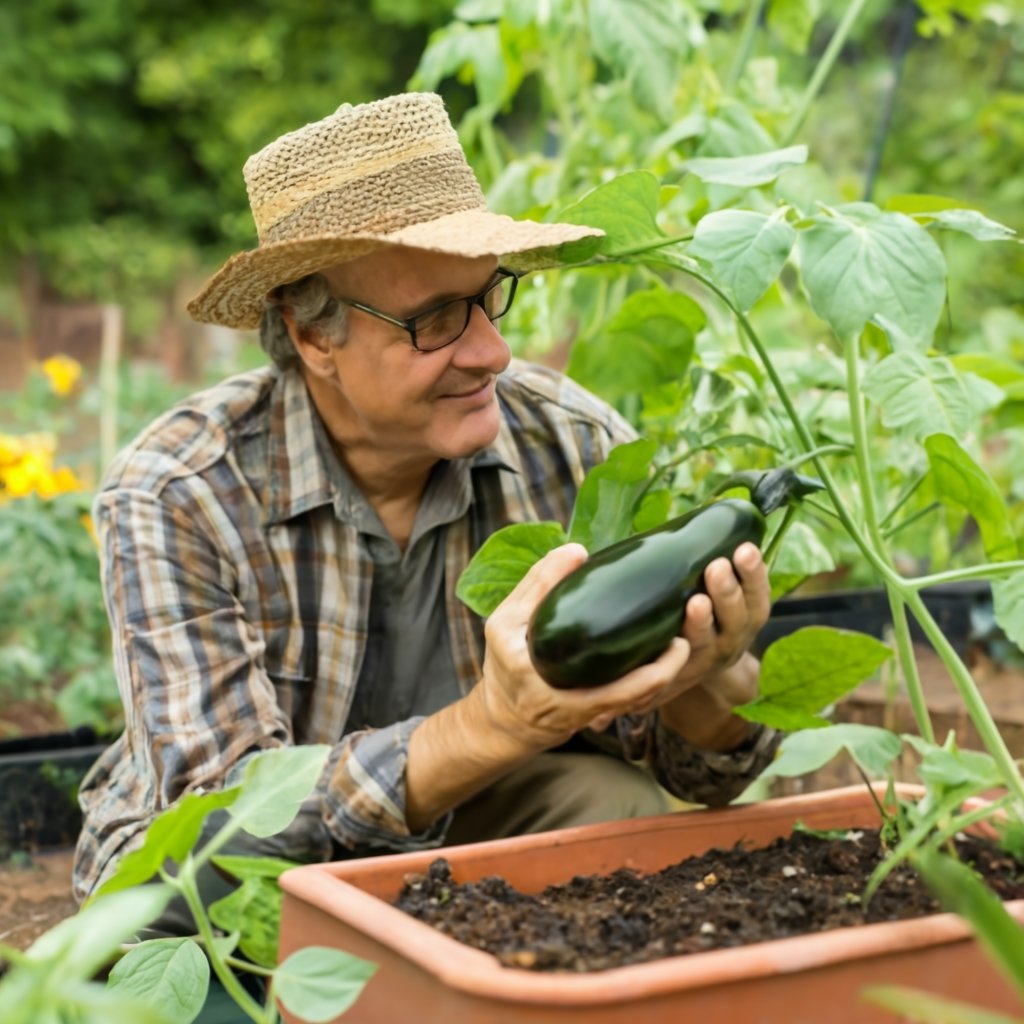
Supporting the Plant
As your eggplant starts to fruit, it’ll need some support to manage the weight—think of stakes or tomato cages as a helping hand to keep your plants upright. Mulching? Absolutely. It’s like a blanket for the soil, keeping it cool and moist. Lay it down early to prevent weeds and help retain moisture, and your eggplants will thank you with a bumper crop.
Harvesting and Maintenance
When and How to Harvest Eggplant
Time your eggplant harvest when the skin is smooth, glossy, and the color deep—this is when they’re at their peak. Use sharp scissors or pruning shears to snip the fruit off, keeping a short piece of stem attached. A clean cut helps prevent damage to the plant and keeps your eggplants looking good off the vine.
Regular Care and Pest Management
Keep an eagle eye out for uninvited guests like whiteflies and spider mites. Insecticidal soap is your go-to for these pests. For blossom end rot, ensure consistent watering and consider calcium supplements for your soil. Here’s a quick chart for pest control:
| Pest | Identification | Prevention | Treatment |
|---|---|---|---|
| Whiteflies | Tiny white insects under leaves | Yellow sticky traps | Insecticidal soap |
| Spider Mites | Fine webs, yellowing leaves | Regular misting | Insecticidal soap, neem oil |
| Flea Beetles | Small, jumping insects | Mulch, row covers | Insecticidal soap, pyrethrin |
| Blossom End Rot | Dark, sunken spots on bottom | Consistent watering, calcium | Adjust watering, add calcium |
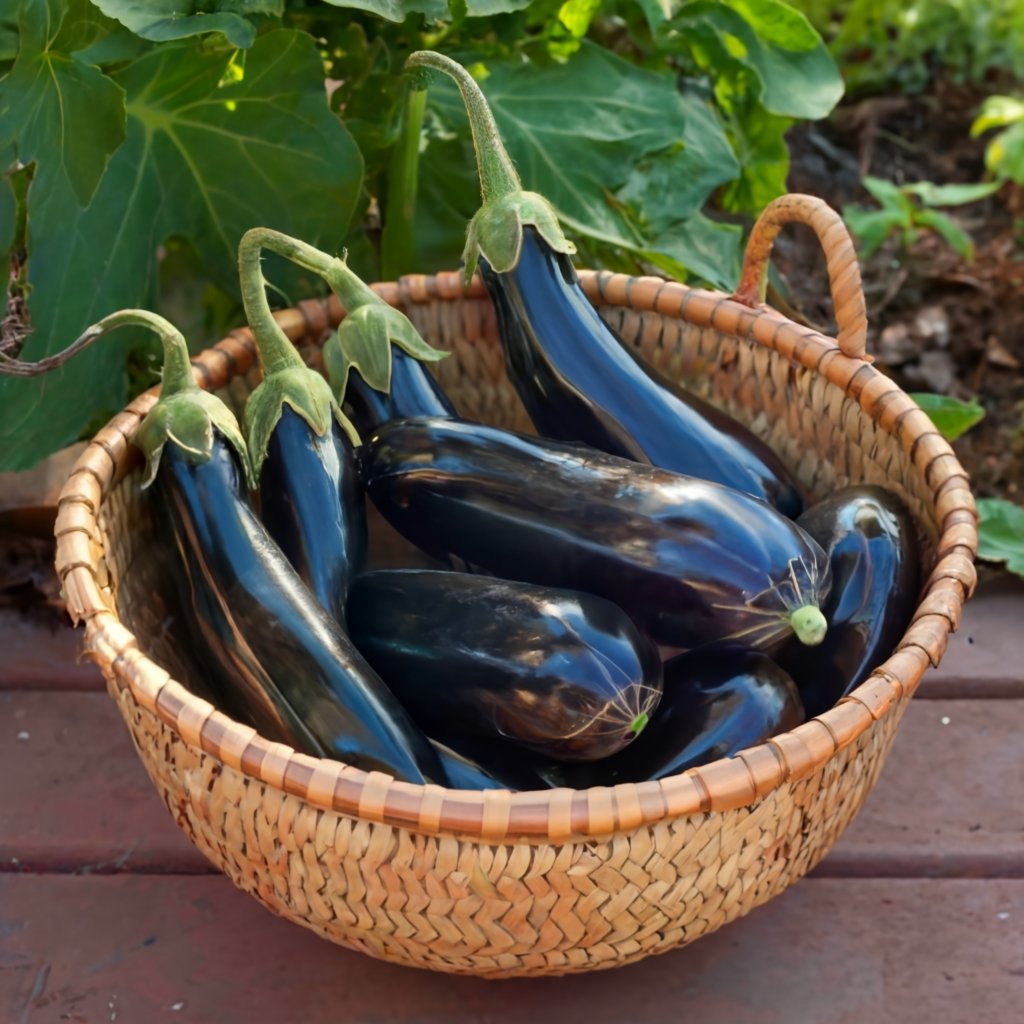
Regular maintenance, including proper feeding, watering, and monitoring, will help prevent these issues and ensure your eggplants continue to thrive.
Troubleshooting Pests and Diseases in Container Eggplants
Dealing with Pests and Diseases
When waging war against pests with insecticidal soap, follow these steps:
- Identify the pest and confirm that insecticidal soap is an effective treatment.
- Purchase or make your own insecticidal soap solution.
- Test the soap on a small area of the plant first to ensure it doesn’t cause damage.
- Apply the soap generously to the affected areas of the plant, including the undersides of leaves.
- Repeat the application every 4-7 days until the pests are gone.
For calcium deficiencies:
- Confirm the issue is blossom end rot, typically indicated by dark, sunken spots on the bottom of the fruit.
- Increase calcium in the soil either through amendments or by using a calcium-rich foliar spray.
- Ensure consistent watering as fluctuating moisture levels can disrupt calcium uptake.
Addressing Environmental Stress
Eggplants don’t like surprises, especially from the weather. For cold snaps, cover them up at night with frost cloth or move them indoors if possible. In case of a deluge, protect the plants with a tarp or move them to a sheltered spot. Consistency is key—your eggplants will thank you for a stable living environment.
Summing Up Eggplant Care in Pots
To wrap it up, caring for eggplant in pots is all about choosing the right variety, giving them a spacious home, and placing them where they’ll get plenty of sunshine. Keep their soil well-fed and watered, support their growth, and be vigilant about pests. With these tips in your gardening toolkit, why not start your own container eggplant garden? The time is ripe to get those pots ready and enjoy the fruits of your labor!
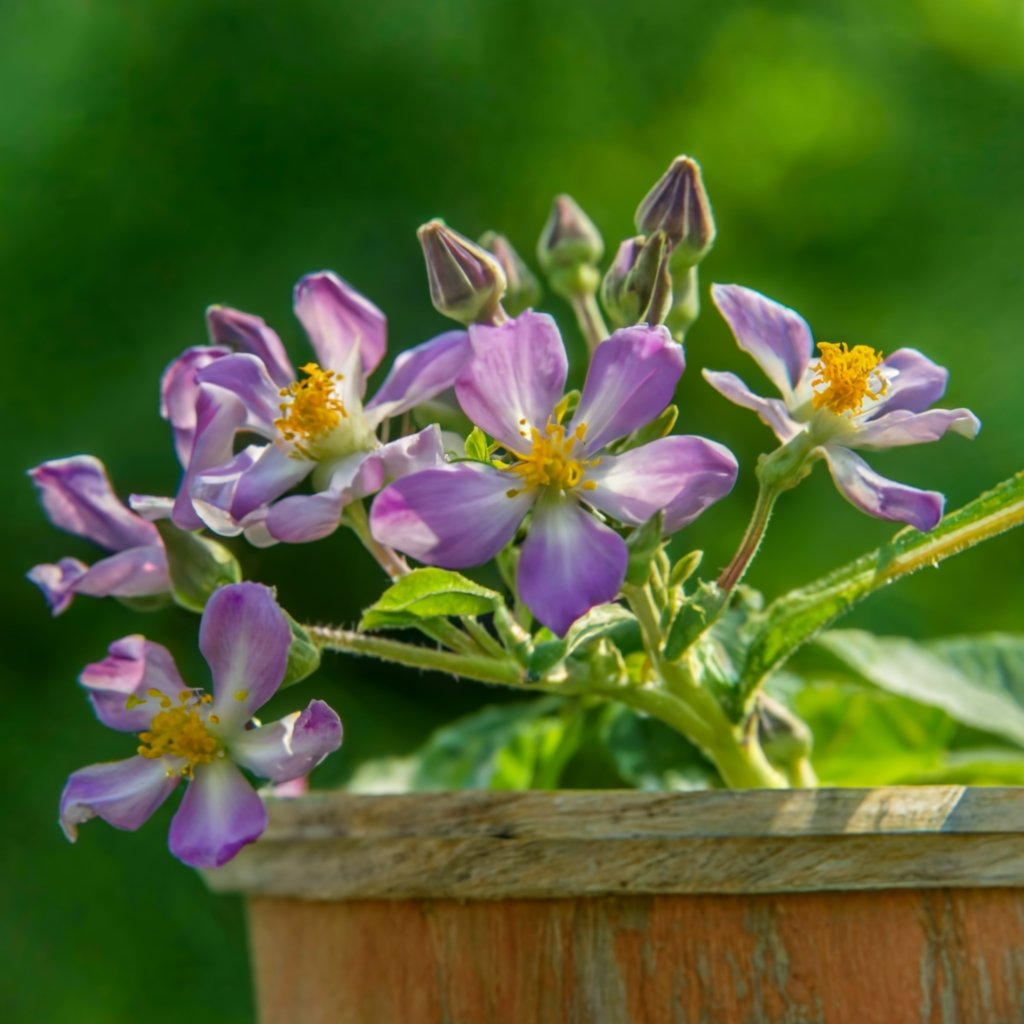
Grow Eggplant in Containers – Questions and Answers
Should I pinch off eggplant flowers?
Nope, don’t pinch them! Those flowers are future eggplants in the making. Let them be, and with the right care, they’ll turn into the delicious fruits you’re craving.
What is the best fertilizer for eggplant?
Eggplants are fans of balanced fertilizers, but they love an extra bit of phosphorus and potassium, especially when they start flowering. Look for a fertilizer labeled with a higher middle number, like a 5-10-5, which indicates more phosphorus.
How do I get my eggplant to produce more fruit?
Keep them well-watered, ensure they’re getting enough sun, and feed them with a phosphorus-rich fertilizer. Also, regular harvesting encourages more fruit, so don’t be shy about picking them when they’re ripe.
Do all eggplant flowers turn into fruit?
Not always. Sometimes flowers drop without fruiting, which can be due to stress, lack of water, or improper pollination. To increase your odds, maintain consistent care and maybe give them a gentle shake to help pollination along.
Are eggplants fruit or vegetables?
Botanically speaking, eggplants are fruits—they grow from a flowering plant and contain seeds. But in the culinary world, they’re treated as vegetables because they’re used in savory dishes. So, they have a bit of an identity crisis, but whether you call them a fruit or a vegetable, they’re delicious either way!
